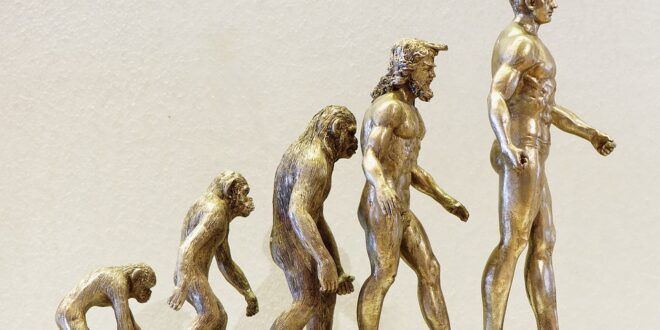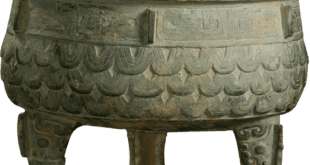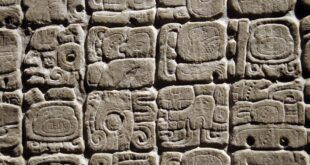The Best 20 Fossil Finds that Unravel Human Ancestry
Human evolution is a fascinating topic that many people are interested in. Over the years, there have been numerous discoveries of fossil remains that have enabled scientists to understand human ancestry better. In this article, we’ll be looking at the 20 best fossil finds that have played a significant role in unraveling human ancestry, in no particular order.
The Taung Child
The Taung Child, discovered in South Africa in 1924, was the first-ever Australopithecus africanus fossil to be found. This fossil helped scientists understand early human bipedalism.
Lucy
The partial skeleton of Lucy, discovered in Ethiopia in 1974, is one of the most famous human fossils. It belongs to the species Australopithecus afarensis and dates back to about 3.2 million years ago.
Turkana Boy
Turkana Boy is the name given to a nearly complete skeleton of Homo erectus that was found in Nariokotome, Kenya, in 1984. The fossil is about 1.5 million years old and helped scientists understand Homo erectus’s body shape and size.
Sahelanthropus tchadensis
In 2001, a a nearly complete cranium of an earlier hominid named Sahelanthropus tchadensis was discovered in Chad. This was a landmark discovery in the study of the timeline of human ancestry as it was initially thought that human ancestry starts at East Africa.
Homo naledi
In 2013, 15 individuals’ bones were found in the Dinaledi Chamber, in South Africa’s Rising Star Cave. The bones belonged to a new human ancestor species named Homo naledi. Age estimation is difficult, but genus is believed to have existed 300,000 to 2.8 million years ago.
Peking Man
Peking Man was the name given to several human fossils discovered in China in the 1920s and 1930s. They were specimens of Homo erectus and are thought to be around 500,000 years old.
Denisovans
In 2010, a finger bone of a new type of human ancestor species – Denisovans – was found in the Denisova Cave in Siberia. Further digging led to scientists’ estimation that Denisovans interbred with Homo sapiens.
Ardipithecus Ramidus
Ardipithecus Ramidus, found in Ethiopia, Africa on 1994, was a pinpoint discovery in that researchers noted it looked more like a new creature with transitional features between those of apes and humans.
Australopithecus Sediba
Australopithecus Sediba was found in 2009 in South Africa, has the potential to link humans with our ancient ape ancestors, researchers say.
Orrorin Tungenensis
Orrorin Tungenesis, discovered around 2000, is definitely another ‘right place right time’ find for studying human evolution, because stone tools were found at the discovery site, suggesting that the planet’s earliest hominids might have been clever enough to fashion crude axe-head-like objects by themselves.
Laetoli Footprints
Discovered in northern Tanzania in the 1970s by a Leakey family team, significant number of footprints were visible to scientists. Discovered to have belonged to two smaller adults and three slightly larger individuals or potentially juvenile specimens belonging to Australopithecus afarensis.
Homo Heidelbergensis
Homo Heidelbergensis, found in 2000 in Germany, was the last common ancestor of Homo sapiens and Neanderthals. The species is believed to have existed between 700,000 and 400,000 years ago.
Neanderthal
Another fascinating topic in human evolution, Neanderthals share an ancestor in Africa with orthodox Homo sapiens, a fact backed up by study of the timeline of human migration out of Africa. The epitomic missing link in the ‘story of life’, studying them will greatly benefit human evolutionary science
Flores Man
Flores Man, known also as hobbit, was found in Indonesia in 2003, finds that suggest a healthy Flores hobbit population existed until as recently as little over 12 millennia earlier (approximating 15,000 years ago).
Homo Habilis
Homo habilis fossils previously discovered provide a fascinating if incomplete window into the birth of the Homo branch of primate ancestry. It had advanced gripping skills and could make rudimentary tools. It is believed to have lived around 2.8-1.5 million years ago in Africa.
Java Man
In 1891, Dutch physician Eugene Dubois discovered a partial skullcap, a femur, as well as several teeth of our prehistoric ancestor Homo erectus in Indonesia. A titan for helping scientists in understanding what lie behind the curve of human evolution.
Grimaldi Man
The best Gimaldi Man recovery was achieved by renowned Italian archaeologist Giuseppe Sergi five kilometres north of Ventimiglia in the lower rock formations that dated back several million years most likely before man entered the le nastro-sardinian primalunch.
Kebara Cave
One of several notable finds at the Kebara Cave in Israel consisting of ancient remains that scientists connect back to what looks like to be neanderthal-human hydrids. Tests suggest the amalgamated fossils lived roughly 50-70 millennia ago.
Swartkrans Man
Swartkrans Man isn’t universally recognised but has made a forward-thinking contribution to the contemporary anthropology academy. Dr Robert Brain drew comparisons between the change in diet, scavenging behaviour, shift to cookery and animal domestication beneath our evolutionary blueprint in species spanning those outscoping the heterogenous species which preceded Homo sapiens after the australopithecines.
Toumai
Toumai, whose discovery was significant in much debate and discussion pertaihning to theorigins of sust this idea is one notable clash of view is the dating: at around 4.4 million years, Toumai could easily fit the bill as LCA or ancestral member of several lineages of early hominids.
 Mind Uncharted Explore. Discover. Learn.
Mind Uncharted Explore. Discover. Learn.




